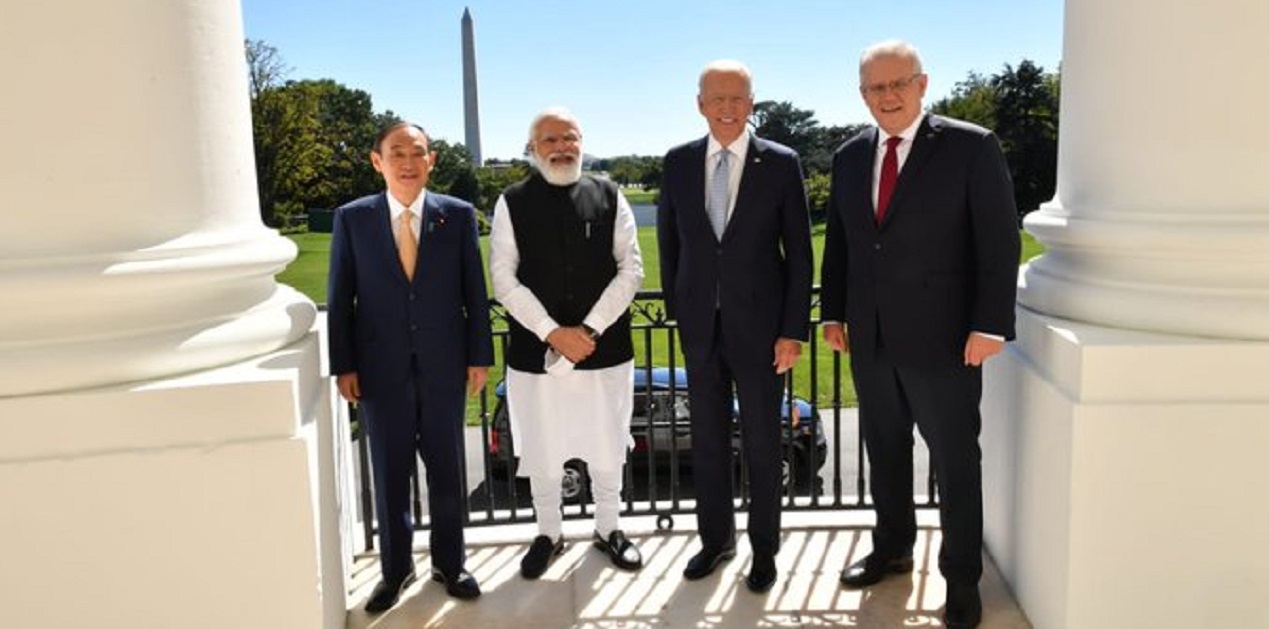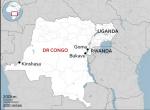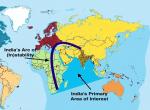Few foreign policy matters generate opinions as polarising as over the Quad. The prime point of difference is over what the Quad ought to do, and whether it should be militarised or not. These concerns are fair on its own but it misses forest for the trees. The correct way to assess the Quad would be to understand its fundamental goal and, if it serves India’s interests. Unfortunately, a lot of Quad critics seem to miss assessment on these lines. There is either a wide misunderstanding about the Quad, which then fuels corresponding expectations (causing disappointment) or, downright dismissal stemming from inaccurate assessment of the context of the China challenge. For some observers, another point of criticism is the absence of a (blatant) anti-China rhetoric from the Quad meetings.
There is little to argue about the raison d’être of the Quad: China. All the four members face a common challenge from China. Yet, China does not impact all the members equally. India is the only one to face China’s challenge both on the oceans as well as on the land. Amongst the Quad, only India shares a land boundary with China, a China-Pakistan nexus means high probability of a two-front war for India. So, for India, the challenge from China is traditional: territorial and military. It is on this premise that many from the Indian strategic community desire that the Quad must have an unabashed military face.
As serious as the territorial concerns are, should India that aspires to play a greater role in the world, be confined to a localised or tactical approach with respect to China? India’s approach through the Quad is strategic. To elaborate this point, a description of the contemporary international security needs to be understood. The world is already in the future. Hyperbole aside, the security environment is way past the Wars era. The distinction between traditional and non-traditional security has nearly blurred. The COVID-19 pandemic (and its dubious origins) have changed our conception of security. The world can be brought to a standstill without firing a single shot. Unlike war years, there’s no punitive action against the perpetrator (at least not for now). International conflicts henceforth will be sophisticated, because there is more than one way to act against the adversary; without the military. It is now discovered that the supply-chain dependency and trade dependency on China can be problematic; trade is securitised. Most notably, the new-age technologies, the Internet-of Things, widespread use of artificial intelligence (AI) have given rise to security threats that are unprecedented in global history. States have to consider that the adversary could use non-kinetic means as an instrument of malice. Thus, the challenge from China is not limited to the LAC, it is at a global scale and it will affect India’s security in one way or the other. The approach to China therefore, has to be systemic. And this is the prism to see the Quad through.
The next set of criticism is that the Quad is not frankly talking about China, or that it is not calling out China’s actions. The counter-question to this would be- does the Quad really need to? It is crystal clear that so far all of Quad’s movement targets China. (In a nuanced manner, as mentioned above). What would a sharp rebuttal of China achieve? The beauty of diplomacy lies in expressing in not so certain words. A sharp rhetoric or a bellicose language would lead to tense narratives and may precipitate action. None of which is in anybody’s interest at the moment. A sharper anti-China tone would also upset other regional players in India’s neighbourhood and further east. As powerful as the Quad members would be, it ought to enjoy support and some sort of legitimacy from the Indo-Pacific region in order to sustain. Most of the countries in the Indo-Pacific want to avoid a confrontation with China, and also between China and Quad members. The Quad is rightly moderating its tone. (Anyway, even without an overt anti-China hostility, China has upped the ante through its recent actions in the South China Sea, over Taiwan, and the LAC.)
A contrary explanation into Quad’s obtuse rhetoric with respect to China could be that all the four countries want to keep window open with China. It is plausible that the current course of action of the Quad is aimed at bringing China on a straight path, or the Quad itself being a lever to get China to modify its actions.
After examining the arguments about what the Quad is not doing, it is important to see what the Quad is actually doing. As a grouping that represents a normative alternative to China, the Quad had to be seen as pulling the world out of the Covid-19 pandemic. Hence, it rightly focussed on vaccination. Since it is widely believed that mass vaccination is the only way to return to normalcy, countries of the Indo-Pacific are eager to procure vaccines. The Quad members have leveraged their individual capacities in this process and formed a network for delivering the ‘global good’. This creates a contrary image to China as the country where the virus originated, and the country whose secrecy caused global devastation. The Quad is a superhero of sorts to salvage the world from China-induced devastation.
The next agenda is critical technology where China is gaining an edge, and where a collective effort is required. The Quad also looks into cyber security. Both these areas are shaping up and will define national security in the future. Since these two areas are contemporary security challenges and also futuristic, India can gain (in setting standards/norms and as opportunities for domestic sectors) by pursuing these through the Quad. Maritime security has been the foremost agenda of the Quad, and given the dwindling numbers of grey hulls, international cooperation is inevitable. As far as climate change is concerned, one cannot discern much of its utility for the Quad, except as it being a pet project of President Biden.
However, one critical question from India’s perspective should be-if the Quad can be a deterrent to China. Well-meaning critics see no hope unless the Quad dons a pure military hat. The Quad’s military focus in whatever limited way, has been maritime (besides in space and non-kinetics). Even while the Quad was shaping up, there was a wide agreement in India that India’s China challenge is basically continental and that no other country will put boots on ground. The fact is that New Delhi would not desire it either. That means Quad’s military scope of cooperation is in the maritime domain. If the Quad can deter China on the oceans, then it would have passed the test. In all likelihood, such a deterrence could come from a Quad-plus, with some European and East Asian countries’ participation. (Which could be with or in coordination with Quad navies)
In conclusion, the Quad should be fairly assessed for what it is rather than what some expect it to be. With China as the centre, the Quad is emerging as a meta structure that would shape norms, rules, standards and statutes of the present and the future security threats in the Indo-Pacific. It will be a mega-network that will undertake doable actions. Quad as a military alliance is not in India’s interest either. Besides, all the other Quad members also have deep economic linkages with China, hence some scepticism about their resolve against China should be considered.
To reiterate, fundamentally the nature of international security is changing, China’s rise has come about in the context of these techno-systemic changes and hence the security threats from China are not one dimensional. The Quad is addressing security problems in this context.
(The paper is the author’s individual scholastic articulation. The author certifies that the article/paper is original in content, unpublished and it has not been submitted for publication/web upload elsewhere, and that the facts and figures quoted are duly referenced, as needed, and are believed to be correct). (The paper does not necessarily represent the organisational stance... More >>
Image Source: https://pbs.twimg.com/media/FAEfmCzXEAgQdgh?format=jpg&name=small











Post new comment